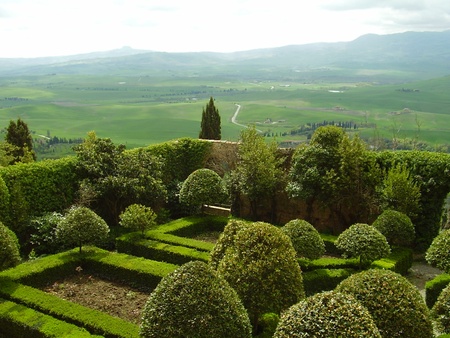
Garden by Design
Jane is not a designer given to harsh lines and minimalist planting. She practices what she preaches when it comes to what she makes for herself. From the outset, as they were doing up the house, she began by planting a birch wood. She also started planting hedges. “The garden’s laid out in rooms, using hedges. That was the best thing we ever did. When I design, soft structures are first for me. They give everything else a backdrop. I made the garden in stages. When you work this way, as it grows, you’re ready to manage it. Although one day you go out and see you made a monster!” This I suspect is the way with most gardeners. “It just kept growing…”. Her design method is interesting. She visualises everything from the windows of the house and believes that “You can’t do it from outside.” When the family arrived first, they lived in the basement, and so the areas visible from those basement windows were first to be tackled. Ten years ago, they moved upstairs and so the garden changed. “You’re watching the seasons from the window. Even in winter, you’ll look out at the interest of a cut-down bed. Then you can watch it creep up in the spring.”
We walked out from the front of the house toward the white cherry garden ‘room’, enclosed with walls of beech hedging. “I don’t like pink cherries,” Jane said as we approached. “We put in the grove of five white-flowering cherries and when they flowered, I thought ‘hey, they’re pink!’ They said ‘yes.’ I said ‘no’, so they came and replaced them.” She found that for the first three years, the cherries sat and did nothing. Then suddenly they took off and came into their own, under-planted with a narcissus mix called ‘Floriad.’ There are also tulips and snake’s-head fritillaries, not normally a mix one expects to do well together. Tulips like free-draining soil and fritillaries are happier in more moisture-retentive soil. Yet they are all doing well here. “Jumping out of the soil!” Jane said. Alliums and camassias follow the earlier bulbs, so the bed under her cherries rolls along from early spring to early summer . She cuts it back in mid-June, feeding the ground with chicken manure. Another cut in September sees it into autumn. “Not a lot of work for a whole lot of show.”
When it comes to maintenance, Jane feels that over-maintenance can be as troublesome as neglect. For her, February to May is when the real work is done with the action front-loaded in the early months. “The big tidy up should be done by St Patrick’s Day. Your beds should be so full that by the beginning of June, when it’s all go, there’ll be no room for weeds. From July to August, if there are any weeds, they should be lost among the good stuff. I et people saying ‘You have foxgloves and I have none. Why is that?” It’s usually because they’ve weeded out their foxglove seedlings. Delphiniums and similar plants need to be deadheaded because they put too much energy into seeding, but a lot of other things should be left to set seen. Summer should just be cutting grass and enjoying what you’ve done – and it’s too hot for work!”
Read the rest of this story in your copy of The Irish Garden magazine available in your local newsagent or via subscription!








